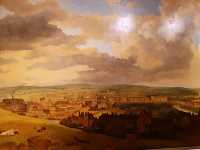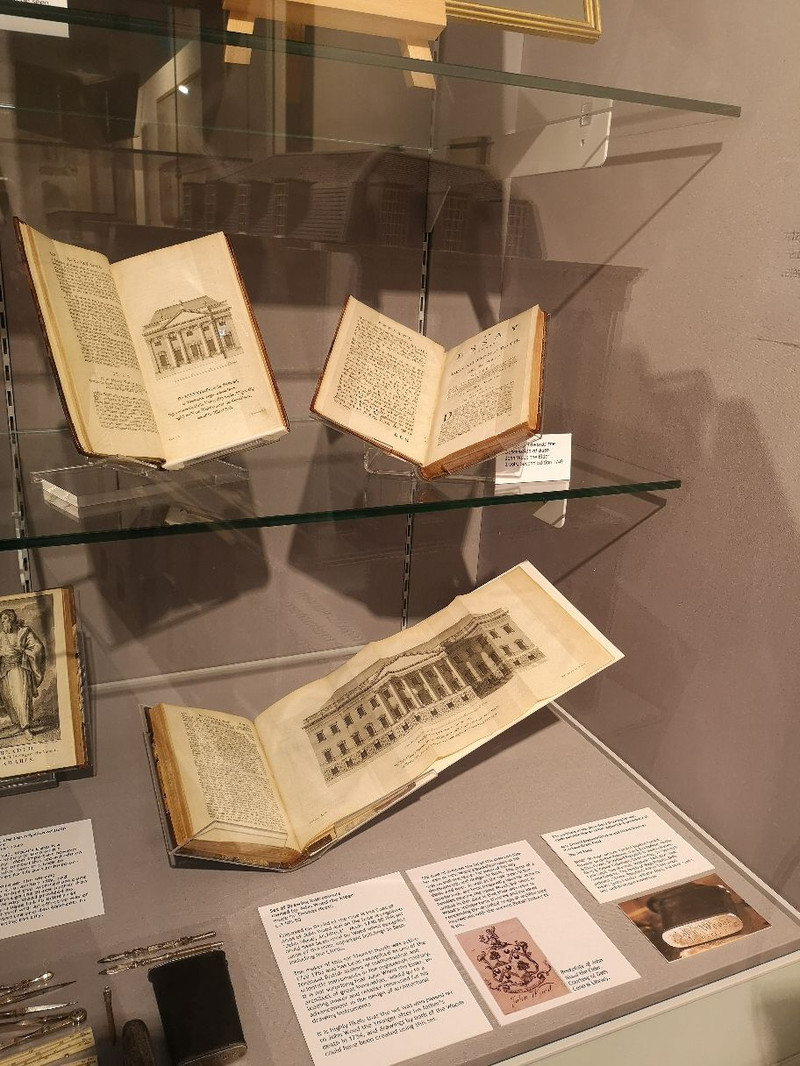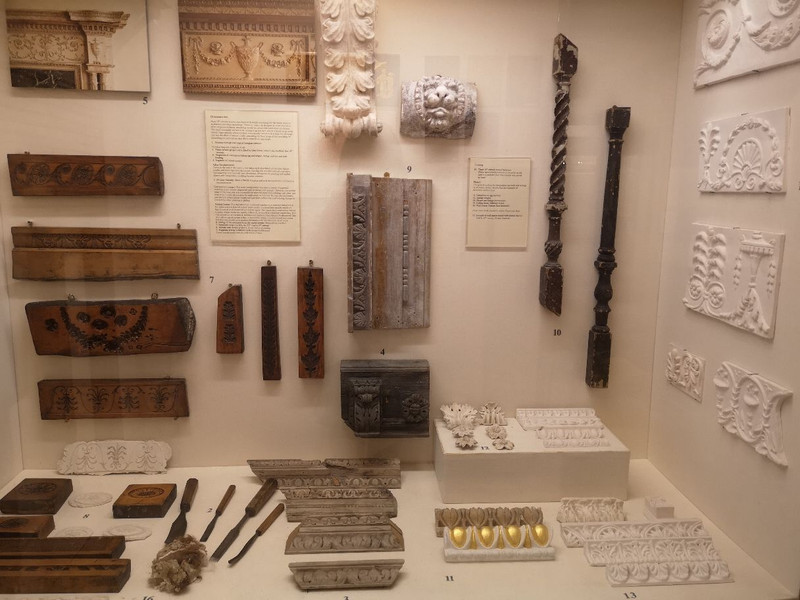The Bath Building Museum (Museum of Bath Architecture) doesn't look like a museum. It's hidden among many houses and shops on the edge of the city. It's guided by signs along the road, through the gates, through the paths, to find it. The hall is also just a hall separated by rows of cabinets with exhibits and presentations. In fact, it is not a museum, originally built for Mrs Huntingdon in 1765, and changed to the Bath Architecture Museum in 1992. The museum fare is 6.5 pounds, and the students 5.5 pounds. There are not many visitors and it is very quiet. The hall with collections, purchases or donations does not feel empty. With these cabinets and exhibits, we can piece together the formation, development and preservation of the small town of Bath. The most impressive is the information and exhibits about John Wood, the architect and son of John Wood, the principal planner of Bath. The Jane Austen Center's introduction describes old John Wood in such a sentence - 'The pioneer who brought Bath from being an insignificant little town into the mainstream of European architecture.'. There is no doubt that John Wood and his son have a deep influence on the history of Bath and even the British architecture. Old John Wood planned the overall style of Bath, Designed many buildings such as Queen's Square (Queen Square), The Circus, his son John Wood, inherited his father's legacy, and finally completed the circular square, designing the Bath Assembly Hall (Bath Assembly Rooms), the famous Royal Crescent Building (The Royal Crescent). The Georgian-style piazza was inspired by the Colosseum, with 33 houses surrounded by a circle and divided into three equal lengths, ensuring that everyone entering the square can see a facade of the building at a glance. Overlooking Bath, you will find the Roundabout, Queen's Square and Gay Street in between, which forms the Masonic logo the shape of a key. The Royal Crescent is made up of 30 townhouses with 114 columns at a 30 degree angle. Brook Street (Brock Street) connects the circular square that symbolizes the sun to the royal crescent building that symbolizes the moon. This Palladian style has had a major impact on many cities in the UK, such as London, Edinburgh, Bristol, etc. The museum displays manuscripts, books, drawing tools and more from the old John wood. In addition, there are paintings of Bath landscapes from different eras. The paintings can see the changes of Bath over the centuries.
;
Museum of Bath Architecture Review
4 /51 Reviews
Popular Destinations
Krakow Travel | Warsaw Travel | Macau Travel | Kyoto Travel | Egypt Travel | Malaysia Travel | Kunming Travel | Inverness Travel | Phi Phi Islands Travel | Hurghada Travel | Alicante Travel | Jakarta Travel | Portsmouth Travel | Hat Yai Travel | China Travel | Shangri-La Travel | Switzerland Travel | Windsor Travel | Lancaster Travel | Dali Travel | Toledo Travel | Mims Travel | Manatee County Travel | Buenos Aires Province Travel | Piedmont Travel | Watertown Travel | Winterset Travel | Windsor Locks Travel | Sydney Travel | Linan District Travel
Recommended Attractions at Popular Destinations
Bangkok attraction near me | Tokyo attraction near me | Manila attraction near me | Hong Kong attraction near me | Seoul attraction near me | Taipei attraction near me | Los Angeles attraction near me | New York attraction near me | Shanghai attraction near me | Kuala Lumpur attraction near me | Shenzhen attraction near me | Guangzhou attraction near me | Osaka attraction near me | Singapore attraction near me | London attraction near me | San Francisco attraction near me | Beijing attraction near me | Macau attraction near me | Bali attraction near me | Paris attraction near me | Orlando attraction near me | Jakarta attraction near me | Ho Chi Minh City attraction near me | Phuket attraction near me | Chicago attraction near me | Toronto attraction near me | Cebu attraction near me | Dallas attraction near me | Istanbul attraction near me | Dubai attraction near me
Popular Attractions
Universal Beijing Resort | Burj Khalifa | Ocean Park Hong Kong | The Roman Baths | Van Gogh Museum | Genting SkyWorlds Theme Park | Tokyo Disneyland | Badaling Great Wall | Mutianyu Great Wall | London Transport Museum | Universal Studios Japan | Chinatown | Sky Garden | Underwater World Pattaya | Covent Garden | Pattaya elephant jungle sanctuary | Sea World Ancol | LEGOLAND Korea Resort | SUMMIT One Vanderbilt | Hveding Auto | Trirenggo Culinary Park | Caragols Lloa | Badva Waterfalls | Igir Puring | Grange Gheit | Monumento agli Alpini | Stadium Mini Ladang Rajawali,SD | Watu Banyu Taun | Ex Casa del Fascio Asciano | Acropolis of Athens
Popular Travelogues
Bangkok Travelogue | Tokyo Travelogue | Hong Kong Travelogue | Seoul Travelogue | Los Angeles Travelogue | New York Travelogue | Shanghai Travelogue | Shenzhen Travelogue | Kuala Lumpur Travelogue | Guangzhou Travelogue | Osaka Travelogue | Singapore Travelogue | London Travelogue | San Francisco Travelogue | Beijing Travelogue | Macau Travelogue | Bali Travelogue | Paris Travelogue | Ho Chi Minh City Travelogue | Phuket Travelogue | Chicago Travelogue | Toronto Travelogue | Rome Travelogue
Payment Methods
Our Partners
Copyright © 2024 Trip.com Travel Singapore Pte. Ltd. All rights reserved
Site Operator: Trip.com Travel Singapore Pte. Ltd.
Site Operator: Trip.com Travel Singapore Pte. Ltd.
















